Down the Rabbit Hole
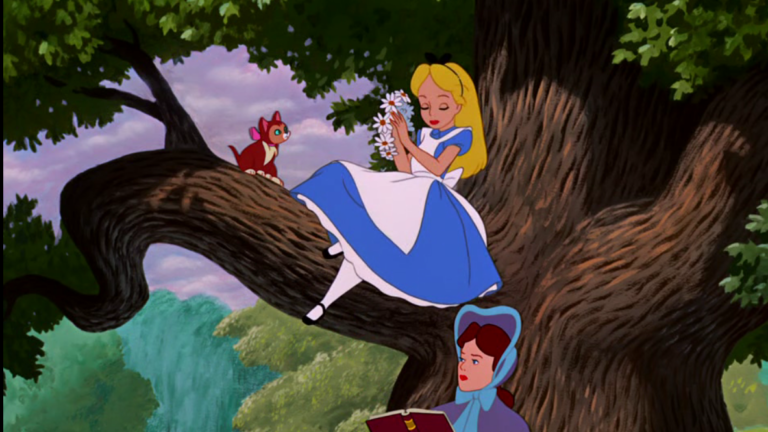
by Carol Wood, First published for the July/August 2010 issue of Finery
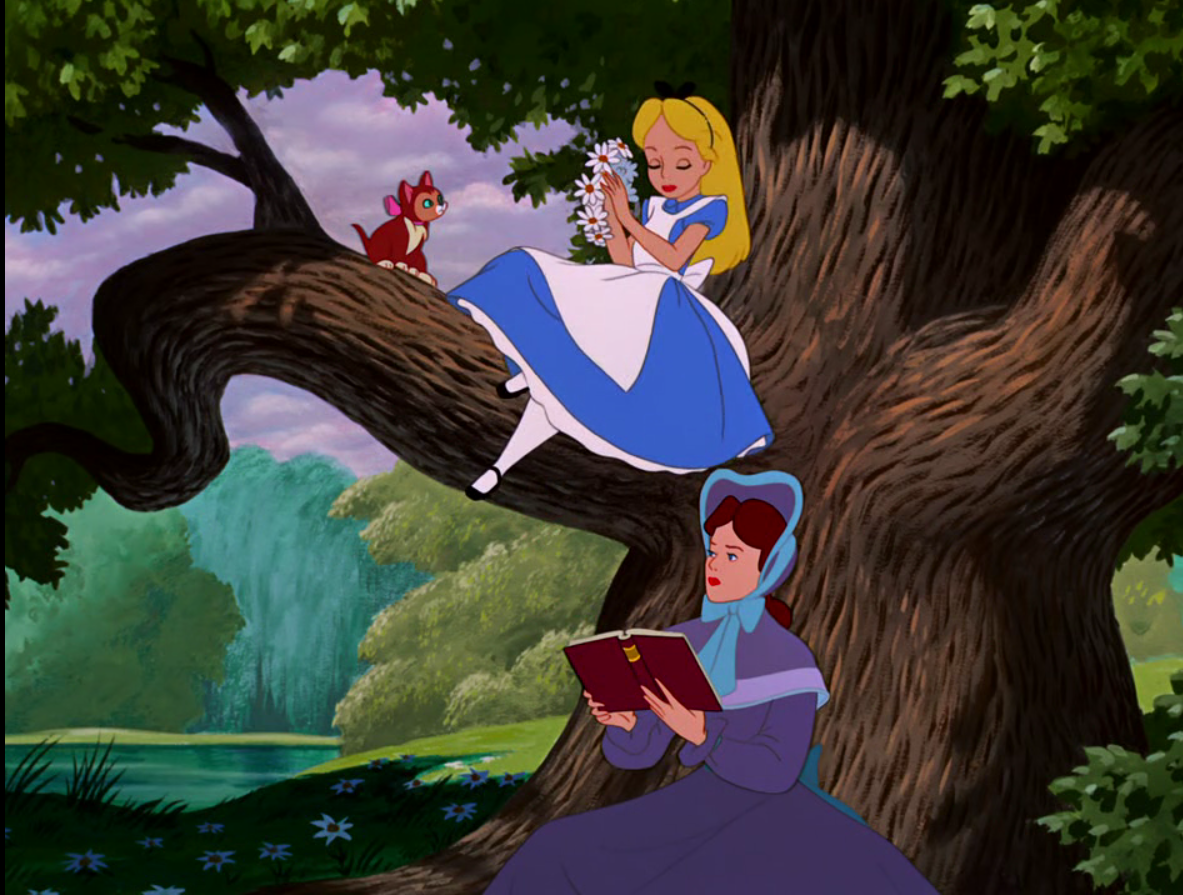
Nothing says “Alice in Wonderland” more than a blonde in a light blue dress. A light blue ball gown will get you as far as Cinderella, a slinky blue dress will even get you to the Devil, and a light blue gingham pinafore will get you all the way to Dorothy. But if it’s Alice you’re looking for, she’s got to have short, puffy sleeves, a knee-length, puffy skirt, that oh-so-Alice white bibbed apron, and long locks of blonde hair. That’s the Alice we know. That’s the animated Disney Alice of 1951 and the Disney-n-Burton Alice of 2010. But that’s not how Alice got her start.
In 1865, Rev. Charles Lutwidge Dodgson (a.k.a. Lewis Carroll,) wrote and illustrated his “Alice’s Adventures Underground.” Alice appears in a short, puffy dress with long hair in Carroll’s 37 illustrations, but they’re black-and-white so they don’t divulge the color of her frock or hair. The following year, Carroll’s rewrite, “Alice in Wonderland,” was gilded with Sir John Tenniel’s well-known illustrations.
The 1889 color versions of those illustrations depict Alice donning long golden locks, a white bibbed apron, and short, puffy dress. However, that dress is yellow, not blue. In fact, since Tenniel’s illustrations, Alice’s garb has gone through many incarnations depending on the artist and the era: She appears without an apron, in dark stockings, in short light socks, and in a dress made of white and sometimes even floral cloth. It’s not until the 1920’s that Tenniel’s Alice goes from wearing a yellow, then pink, and finally blue dress, her stockings turn white, and she loses a flounce or two.
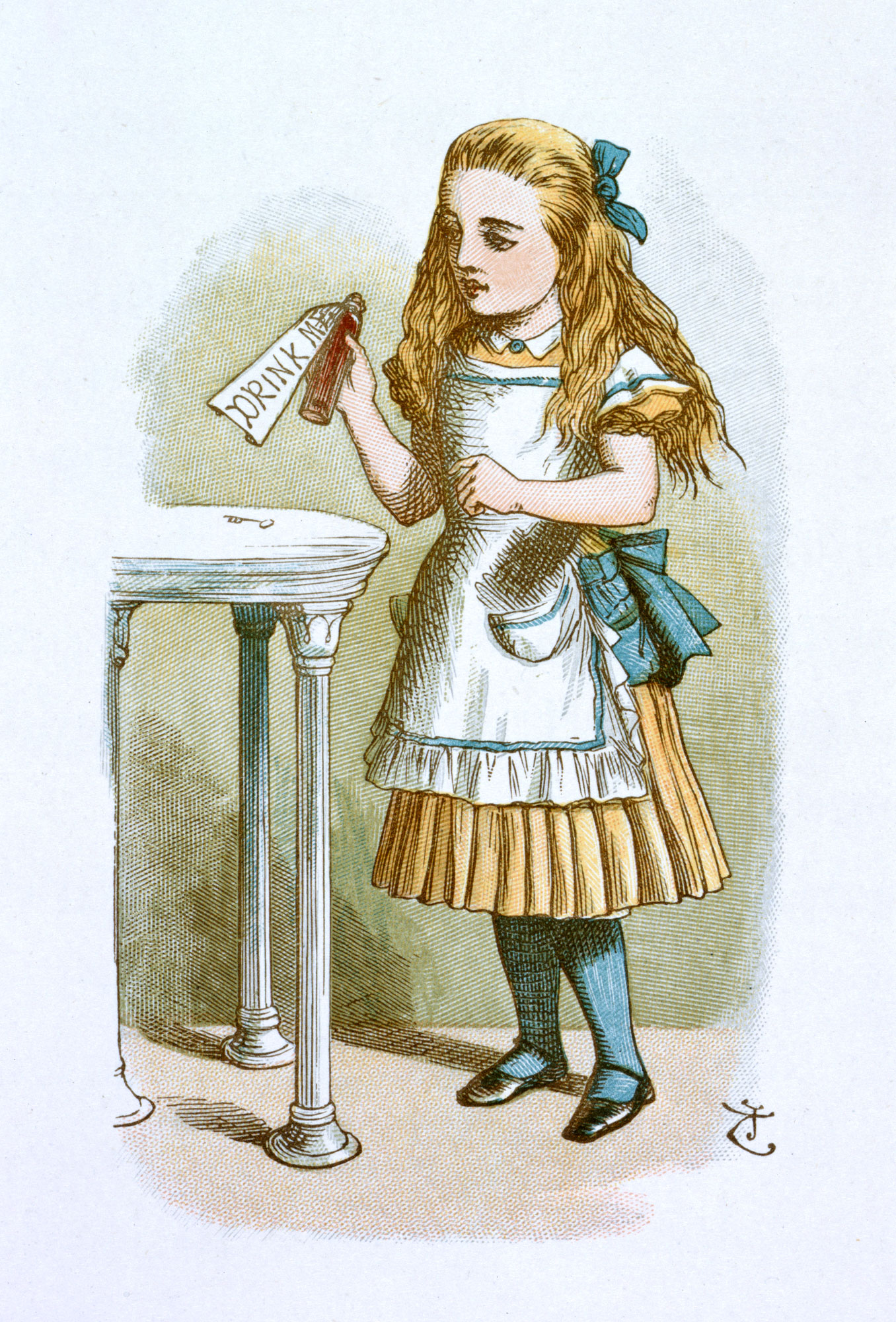
That look, that iconic silhouette of a puffy dress, bibbed apron, and long locks becomes immortalized in Disney’s 1951 animated feature film, “Alice in Wonderland,” which we all know so well. Despite this Disney classic, Alice’s look has continued to change to reflect artists’ styles and the mood of the times. There is no better example than Ralph Steadman’s 1967 illustrations. Although the story is classic Carroll, Steadman’s illustrations are disturbing, grotesque, and haunting. His “Alice” characters are frazzled, disheveled, and look like they’re hyped on drugs. The Alice he pens is less like the pristine young girl in Disney’s 1951 animated movie and more like the young adult in this year’s Burton film.
Tim Burton and Colleen Atwood have created a young adult Alice in search of her courage and, ultimately, her identity. She’s still in light blue with a healthy head of golden locks, but gone are the white stockings, black Mary Janes, bibbed pinafore, and especially the little-girl look. As Burton himself explains, he’s created an Alice on the cusp of womanhood and her costumes express that. Yes, costumes – plural – for she appears in no fewer than eight changes. We first see her in a variation of the Alice dress we’ve come to expect, but once down the rabbit hole, her dress quickly changes into all manner of runway couture depending on whether she’s drunk from the “Drink Me” bottle or eaten from the “Eat Me” cake.
Whereas in all other “Alice” stories, the dress has shrunk and grown with Alice during her many manifestations, the Burton/Atwood dresses stay put while only the character grows and shrinks. This provides opportunity for some very creative costume changes.
In fact, the eight costumes Alice wears in this film have her moving from her first girlish light blue frock, through three couture blue frillies, to a Cindy-Lauperesque frou-frou, to a contemplative Indian suit, then some very chic armor, until she’s finally aboard a ship headed for the far east in a somewhat period-appropriate suit, but with plenty of flair. Oh, and it’s blue.
Each costume seems to represent Alice’s various stages of growth. Quite literally, she shrinks out of her first light blue frock into a loose, Grecian-style version of her petticoats. Upon eating the “Eat Me” cake, the loose gown becomes a 1980’s mini dress with multiple hem ruffles. She then shrinks back down to the Grecian, but then shrinks even more before the Mad Hatter snippety snips her a strapless bandeau-style number (yes, we’ll see THAT in stores this summer.) Is it going too far to suggest these three dresses, made from her first frock’s petticoat fabric, represent Alice looking inward, questioning what’s underneath as those around her question her identity?
The little number she gets from the Red Queen is a spunky red petticoated dress with a black and white printed sheer overlay – literally, black-n-white and red all over. Alice has found her self-confidence, her “muchness,” and summons her anger to save Wonderland from the Red Queen’s tyranny. She contemplates whether she will kill the Red Queen’s Jabberwocky in a light blue, almost white, lightest-weight Indian suit (reminiscent of “Lord of the Rings” with the waterfall-filled valley in the distance.) Now prepared to fight, she wears the coolest shiny silver armor in which to slay the Jabberwocky with boots even more covetous than Sigourney Weaver’s styled-up Reeboks in “Aliens.”
You’d think Atwood would have given the gal a helmet, but her flowing golden locks are the last signature piece of her classic “Alice” look. Her most confident Alice-as-adult look is in the last scene. She’s aboard one of her father’s ships, headed for adventure in a stunning light blue flared-hem wool coat, crazy rick-racked a-line skirt, and quite-the-confident-adventurer waistcoat and necktie. She has finally arrived, our post-adolescent Alice, our Alice out of the rabbit hole and into the future, her future.
In keeping with the trend, this most recent Alice is testament to the Burton/Atwood style and a woman of our time. The Alice of today’s world is older than that of Carroll’s, she’s questioning expectations even more, and expressing herself vividly through her clothing. What lies in store for the next Alice, I wonder? Curiouser and curiouser…
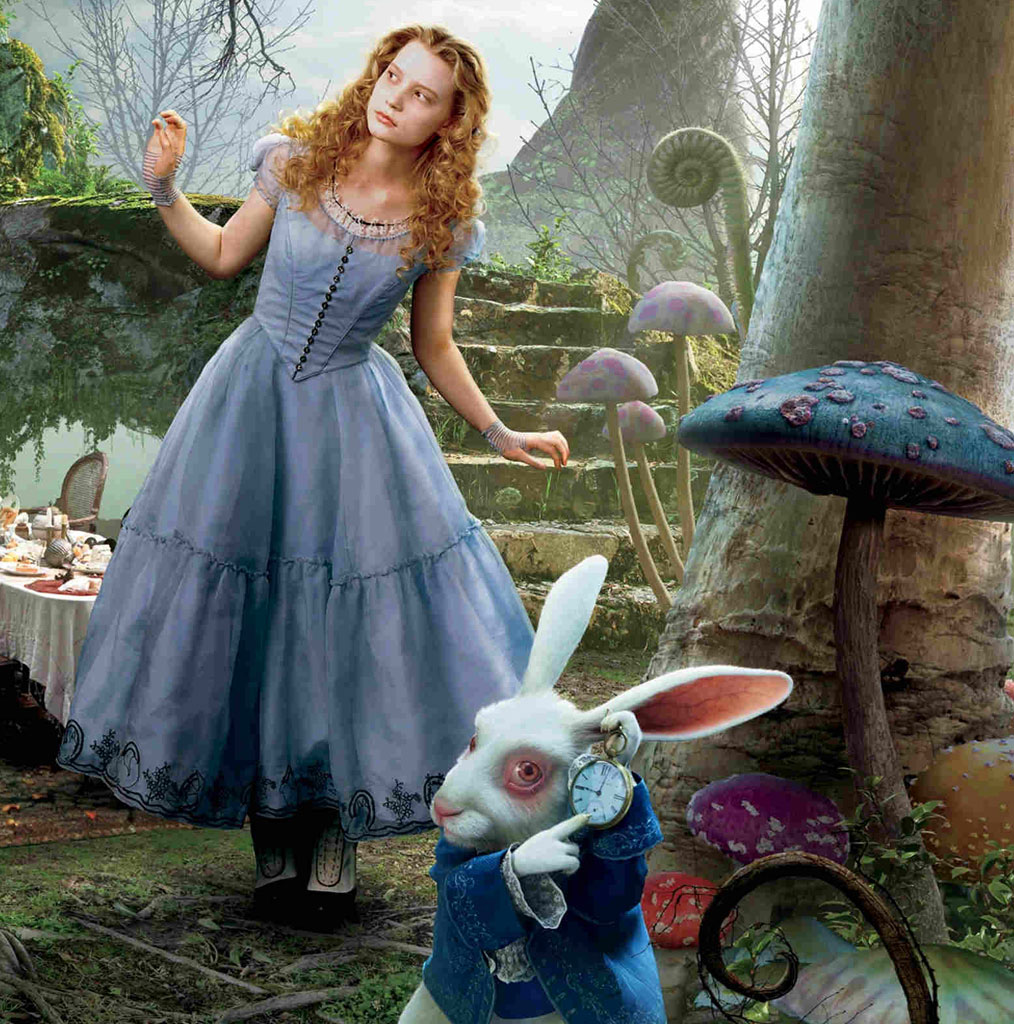

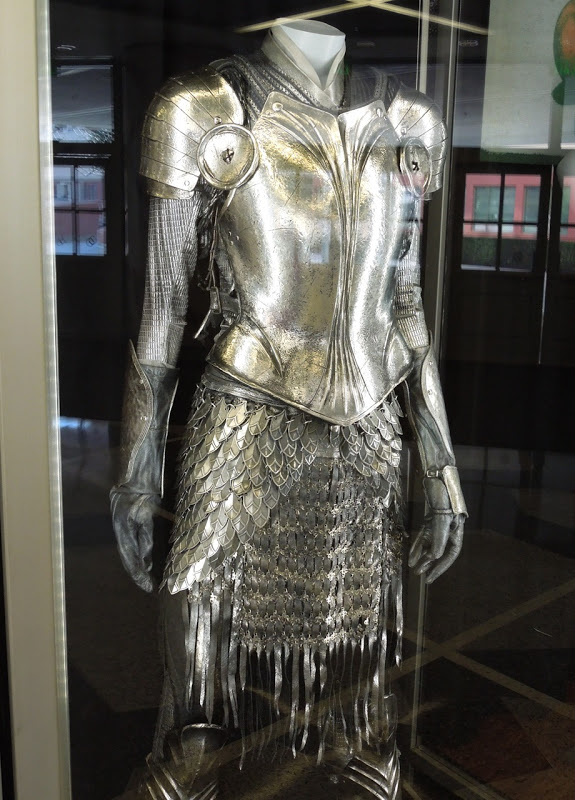
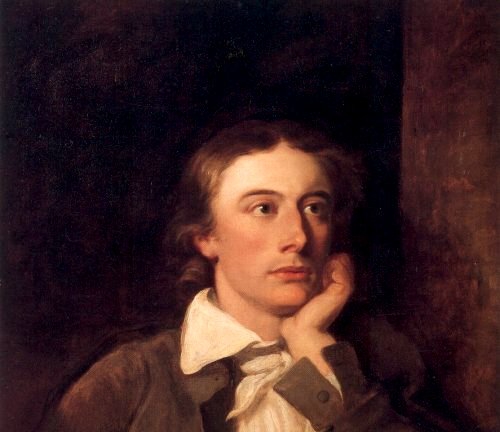
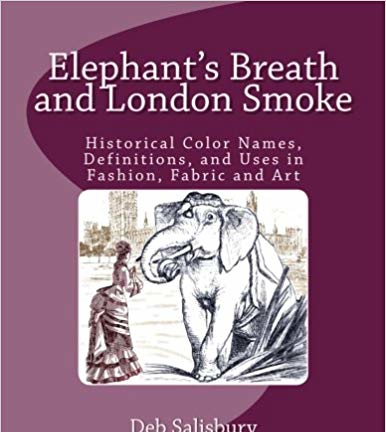
Leave a comment